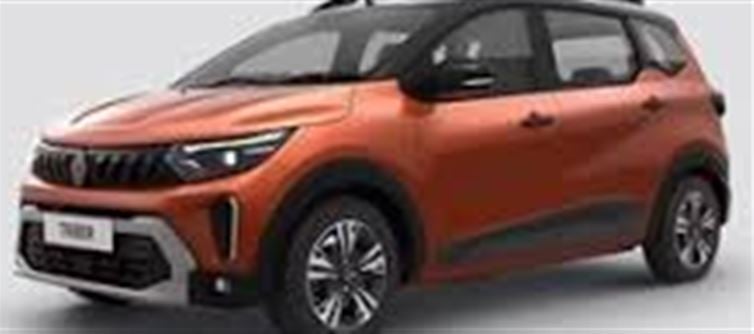
Renault has officially launched the facelifted version of its popular Triber MPV in South Africa, with a starting price of R2,18,999 (approximately ₹11.08 lakh). This move marks another milestone for the India-made Renault Triber, which has already found success in the indian market. Here’s everything you need to know about this exciting development.
1. Renault Triber Facelift Overview
The Triber facelift comes with updated features and a refreshed design, aiming to attract both new and existing customers in the South African market. The 7-seater MPV continues to be based on the same platform as the original model but with a series of upgrades, both in aesthetics and functionality.
2. Price Range and Launch Details
- Price: The Renault Triber facelift has been priced at R2,18,999 (approximately ₹11.08 lakh), which makes it a relatively affordable option in the MPV segment in South Africa.
- Launch: This launch marks the Triber's debut in the South African market, and it is expected to perform well, especially given its growing popularity in India.
3. Exterior and Design Changes
The facelifted version of the Triber features a bold new front design with a revised grille, LED headlights, and a more premium look. The compact MPV’s updated bumpers, LED DRLs, and alloy wheels give it a more modern appearance while retaining the functionality that has made it popular among families and fleet owners.
- New Design: The car comes with sharper lines and a more robust stance. These updates contribute to a more refined and attractive overall look.
4. Interior and Features
Inside, the Triber facelift offers a more comfortable and feature-rich cabin. Key features include:
- Updated Infotainment System: The 8-inch touchscreen system with Android Auto and Apple CarPlay.
- Digital Instrument Cluster: A more modern digital display replaces the old analogue dials, offering more convenience and style.
- Seating Capacity: The Triber continues to offer seating for 7 passengers, making it one of the most spacious options in the compact MPV category.
5. Engine and Performance
The Triber facelift is powered by the same 1.0-liter petrol engine that is currently used in the Indian market. The engine generates 72 bhp and 96 Nm of torque, paired with a 5-speed manual or an AMT (Automated Manual Transmission).
- Fuel Efficiency: The fuel economy remains an important selling point, with the Triber offering impressive mileage for city and highway driving.
6. Safety Features
Renault has equipped the Triber facelift with a range of safety features to ensure passenger protection. Some of the notable features include:
- Dual airbags
- ABS with EBD
- Rear parking sensors
- Reverse camera
- Driver and passenger seatbelt reminders
7. South Africa's Growing Market for MPVs
With the Triber facelift, Renault is tapping into a growing demand for affordable MPVs in South Africa. The country’s preference for spacious, family-oriented vehicles makes the Triber a solid contender in this segment, especially given its attractive pricing and impressive feature set.
8. success of Triber in india and Export Strategy
- In India, the Renault Triber has already carved a niche for itself, thanks to its compact size, practicality, and affordability.
- The export to South Africa is part of Renault’s broader strategy to make the Triber a global model. This move highlights India's increasing role as a manufacturing hub for global markets.
9. What’s Next for Renault in South Africa?
Following the Triber facelift, Renault is expected to focus on expanding its portfolio in the South African market. This launch may pave the way for more Renault models to be introduced in the region, further strengthening the company’s position.
Conclusion
The Renault Triber facelift’s launch in South Africa signifies a significant step forward for Renault’s strategy of expanding its Indian-made products globally. With its attractive pricing, updated features, and strong family appeal, the Triber is well-positioned to make a mark in the South African MPV market.
Disclaimer:
The views and opinions expressed in this article are those of the author and do not necessarily reflect the official policy or position of any agency, organization, employer, or company. All information provided is for general informational purposes only. While every effort has been made to ensure accuracy, we make no representations or warranties of any kind, express or implied, about the completeness, reliability, or suitability of the information contained herein. Readers are advised to verify facts and seek professional advice where necessary. Any reliance placed on such information is strictly at the reader’s own risk..jpg)




 click and follow Indiaherald WhatsApp channel
click and follow Indiaherald WhatsApp channel